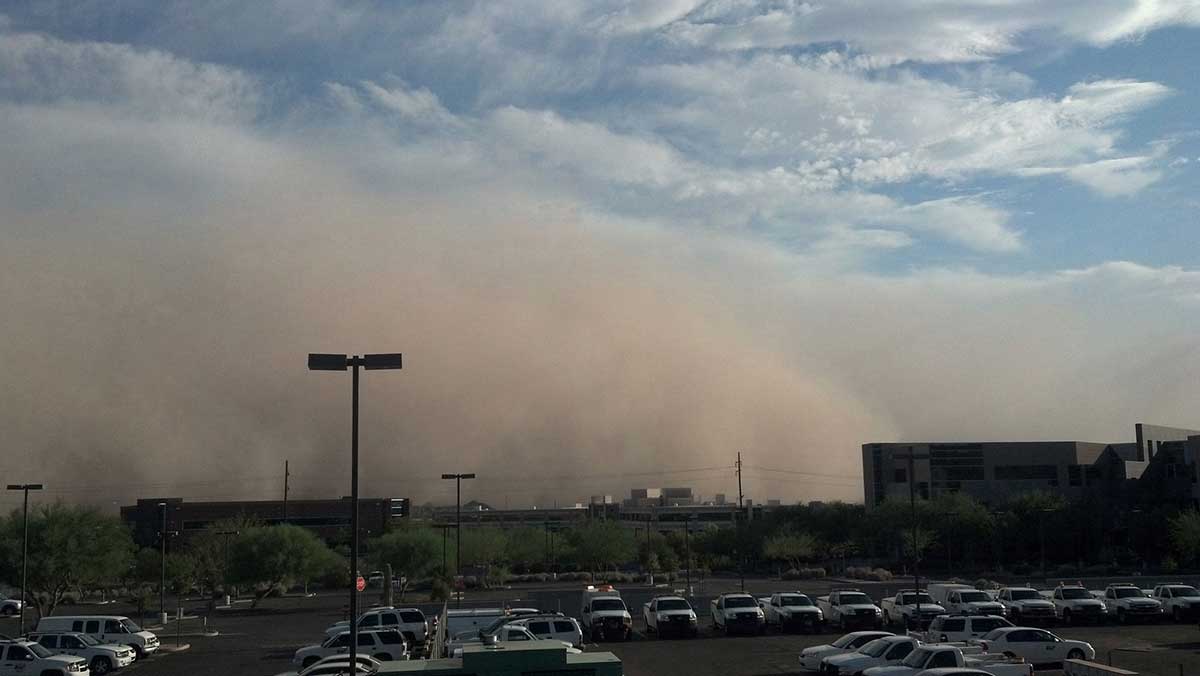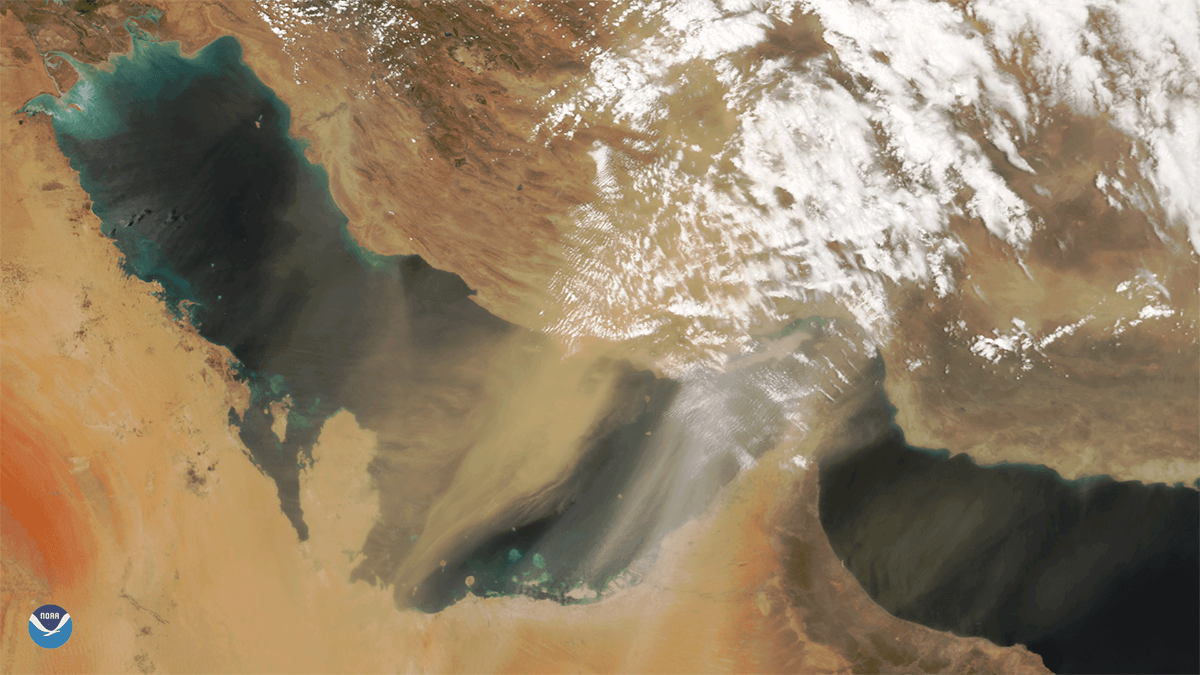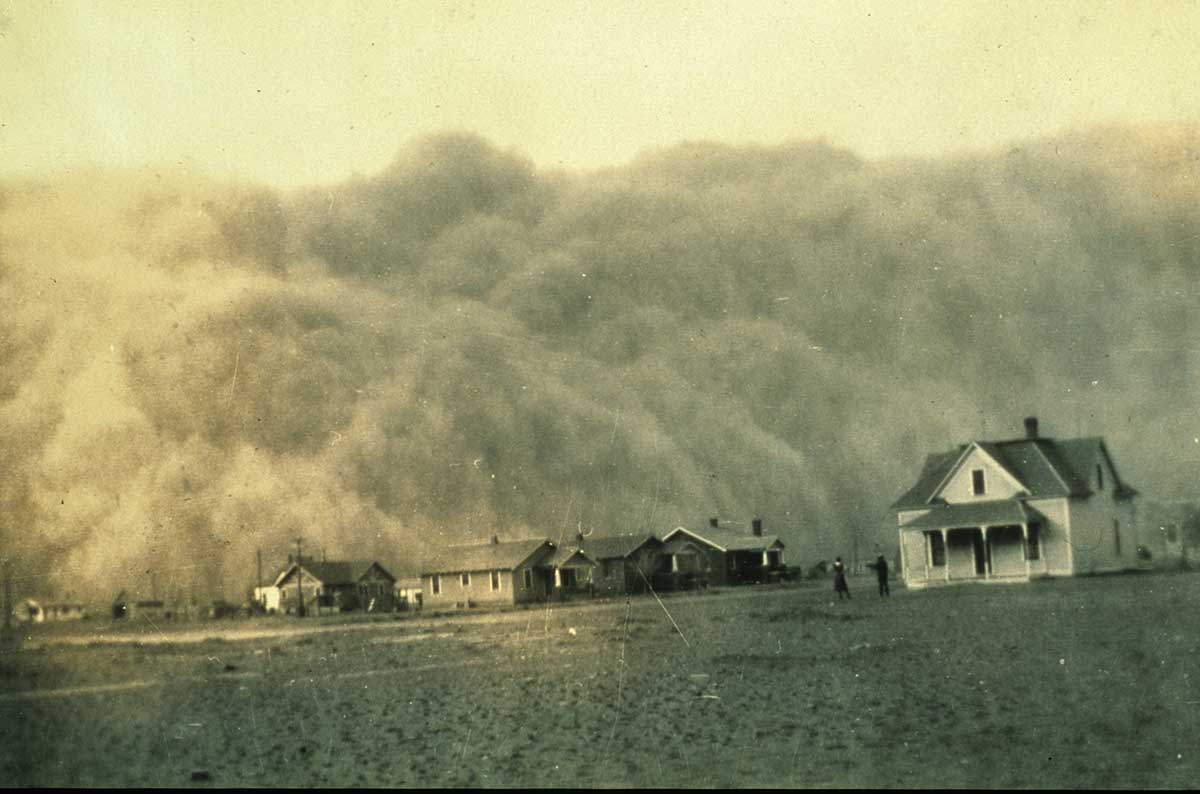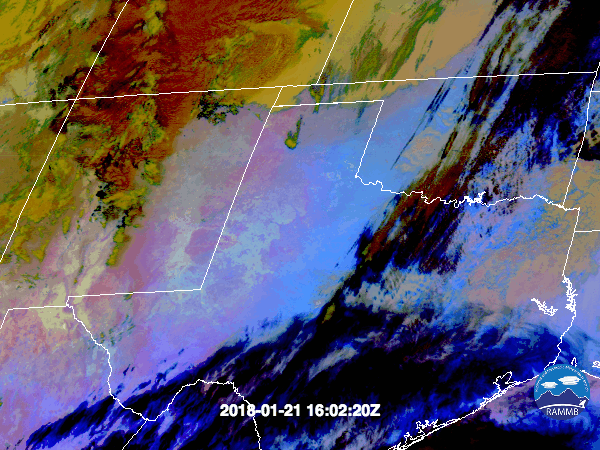
A dust storm approaches downtown Phoenix on August 11, 2012. Credit: NOAA
A dust storm is a wall of dust and debris that is often blown into an area by strong winds from thunderstorms. The wall of dust can be miles long and several thousand feet high.
Dust storms happen in many places around the world. Most of the world’s dust storms occur over the Middle East and North Africa. However, they can also happen anywhere in the United States. In the U.S., dust storms are most common in the Southwest, where they peak in the springtime.
On any given day, dust storms kick up a lot of dust into our air. In fact, scientists estimate that on average, about 44 billion pounds (20 teragrams) of dust are in Earth’s atmosphere at any one time.

The NOAA-20 weather satellite captured this image of a large dust storm over the Persian Gulf on May 13, 2018. Though beautiful from space, the dust was disruptive on the ground, causing flight delays for airlines. Credit: NOAA/NESDIS
What causes a dust storm?
Dust storms are caused by very strong winds — often produced by thunderstorms. In dry regions, the winds can pull dust from the ground up into the air, creating a dust storm.
An area’s geography and plant life can also make it more likely to have dust storms. For example, dust storms are common in regions that are flat and have very few trees and plants. These two features allow winds to build up momentum, causing the winds to grow stronger and drive more dust into the atmosphere.

NOAA’s GOES-16 weather satellite captured this video of a Saharan dust storm blowing off the western coast of Africa on December 19, 2017. About half of the dust suspended in Earth’s atmosphere originates in North Africa. Credit: NOAA/CIRA
Why are dust storms a problem?
Although dust storms may end after just a few minutes, dust can hang in the air and cause problems for days or even months afterward. Dust storms — and their lingering effects — can be hazardous for several reasons:
- A dust storm’s initial wall of dust and debris can arrive suddenly and can catch people by surprise.
- Dust storms can make it difficult to see when you’re driving a car and can lead to car accidents.
- Dust in the air can cause serious problems for airplanes. Dense dust can reduce visibility for pilots, causing delays and cancellations. Dust storms can also cause mechanical problems in airplanes.
- Breathing dusty air during a dust storm can cause health problems — especially for people with asthma.

A dust storm approaching Stratford, Texas, in April 1935. In the 1930s, the American prairie states experienced a period of severe drought and dust storms called the “Dust Bowl.” Credit: NOAA George E. Marsh Album
Is there a warning for dust storms?
If a dust storm is spotted in your area, your local National Weather Service forecast office will issue a dust storm warning. Scientists can also use weather satellites to catch the first signs of a dust storm to help forecasters give an even earlier warning.
Although it’s hard to miss dust storms on the ground, they can be difficult to spot from space. That’s because the dust is often the same color as the ground below, so the storm blends in with its surroundings.
However, the weather satellites of the GOES-R Series (short for Geostationary Operational Environmental Satellite-R Series) have an instrument that can spot dust storms. The instrument, called the Advanced Baseline Imager (ABI for short), is like a camera that takes pictures with many different filters. By combining and comparing information from these different types of pictures, scientists can spot the beginnings of a dust storm. This allows earlier warnings, which can keep cars, airplanes and people safe.

This animation, created with data from the GOES-16 weather satellite, shows blowing dust over New Mexico and Texas on April 13, 2018. The blowing dust is shown in dark magenta. Credit: NOAA/NESDIS/CIRA




